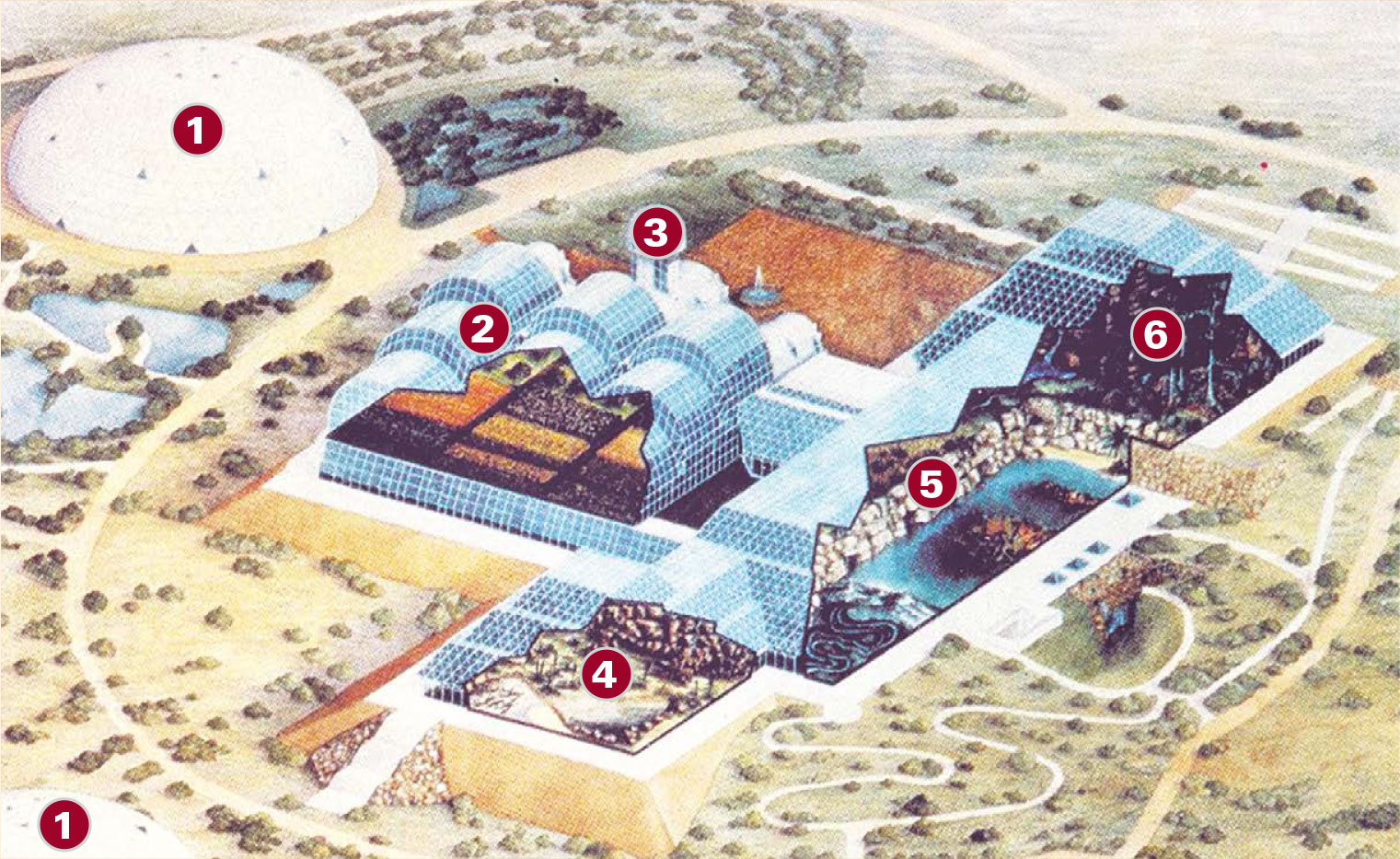From 1991 to 1993, four women and four men were sealed inside Biosphere 2, a 3.15-acre complex in the Arizona desert, to test the survivability of the facility’s self-sustaining climate. “Operating Biosphere 2 has changed the way I operate my organism,” ecologist Mark Nelson said of the experience. “To live in a small world and be conscious of its controls, its beauty, its fragility, its bounty, and its limits changes who you are.” Now run by the University of Arizona, Biosphere 2 continues to serve as an ecological laboratory.

-
1 LUNGS
Two massive expansion chambers, called “lungs,” connected to the structure by underground tunnels moderated air pressure, keeping the structure’s 170,000 square feet of airtight glass panels from bursting or collapsing.
-
2 FARM
The Biospherians drew 83 percent of their diet from the farm, where they grew vegetables and grains in addition to raising and slaughtering goats, chickens, and pigs.
-
3 HUMAN HABITAT
The living quarters included individual apartments, a library, and a telescope. Glass walls allowing sweeping views of the surrounding landscape were intended to prevent cabin fever.
-
4 DESERT
The desert biome was both the hottest and coldest place in the complex, with temperatures as high as 110 degrees and as low as 35 degrees.
-
5 SAVANNA / OCEAN / MARSH
A tropical savanna and a saltwater marsh fed into the ocean biome. Ten percent of the million gallons of water that made up the ocean came from the Pacific Ocean. The rest was synthesized from a salt mix called Instant Ocean.
-
6 RAIN FOREST
Located as far as possible from the desert biome to avoid contamination, the rain forest biome was kept damp and humid by sprinklers, pumps, and artificial streams.
 Though each emerged with a clean bill of health, the eight Biospherians had lost an average of 16 percent of their body weight over the course of the experiment.
Though each emerged with a clean bill of health, the eight Biospherians had lost an average of 16 percent of their body weight over the course of the experiment. Seventeen months into the experiment, oxygen levels had dropped from 20 percent to a dangerous 14.2 percent, requiring the injection of additional oxygen.
Seventeen months into the experiment, oxygen levels had dropped from 20 percent to a dangerous 14.2 percent, requiring the injection of additional oxygen. The seventy tons of biomass included 3,800 plant and animal species, among them bees, bats, nonpoisonous snakes, and three species of cockroach, each selected to fill a specific ecological role.
The seventy tons of biomass included 3,800 plant and animal species, among them bees, bats, nonpoisonous snakes, and three species of cockroach, each selected to fill a specific ecological role.
Image courtesy CDO Ventures and the University of Arizona Biosphere 2.